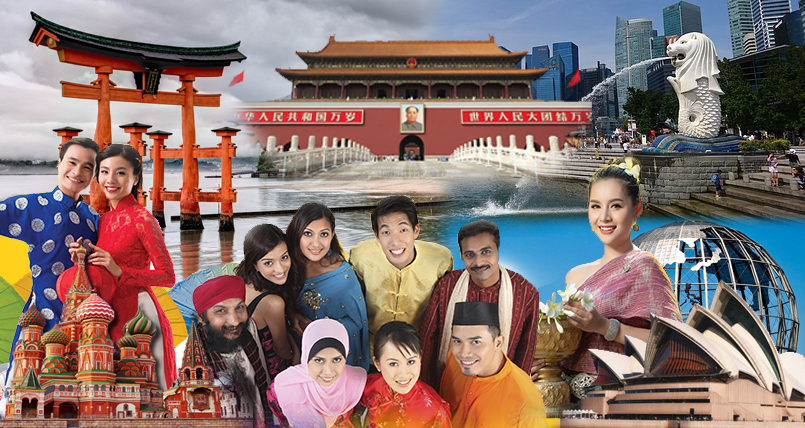Managing Diverse Teams and the role of leaders
1st April 2021

Business Globalisation
Business globalisation and integration of information technology have been the catalyst to how businesses conduct itself and spearhead the intricate organization for continuous improvement and reinventing its processes.
Managing business operations proficiently, is not the same as managing non-business stakeholders. Managers have to comprehend the intricacy of political-economic or cultural environments. More companies now have realised the opportunities and the potential worth to business performance by instilling inclusiveness and diversity. Salesforce CEO Marc Benioff announced publicly in 2015 on its broad hiring endeavours such as hiring and paying men and women employees equally. The company also warrants the mixture of the employees will reflect the diversities of the communities that the business operates in (Vivan, et al. 2018).
Effective Management
To identify the effectiveness of the managers to manage the businesses with diversified cultures, nationalities, and genders, we analyse the elements that makes up these diversities and theories on culture (Hofstede, 1983). The six dimensions are power, identity, gender, uncertainty, indulgence and time. In most Asian countries the power distance is higher than countries such as U.S. or Europe. Individualism ties individuals loosely such as in the US, and UK. We can see in Singapore, Mexico, or Indonesia where collectivism is prevalent as it is the connection of the people and strong loyalty to each other.
The gender roles are distinct such as in the Middle Eastern countries, whilst femininity describes the overlapping roles of genders such as Sweden, Norway, and Denmark. Uncertainty Avoidance is the magnitude of the culture feeling threatened by the unknowns. Singapore is identified as low, but Japan, Portugal and Greece are known to be high. Figure 1 illustrates the cultural dimensions (Geert , et al., 2010).

Pursuant to analysing the cultural dimensions, we look at inclusive leadership. The attributes as reflected in figure 2, comprises of 6 capabilities to adapt to the diverse markets and talents. Leaders strive for diversity and establish an inclusive business attitude and correct ethical values. Embrace varying communication style to fit different rules and etiquettes. Regardless of their team’s background, fair treatment to employees by setting the foundation and standards to ensure that all hiring policies are in compliance (Juliet & Andrea 2020).


The McKinsey 7S model examines the results of future transformations within organisations. The processes and departments are brought into line, for the ultimate goals. This model also identifies the importance of culture into its strategies (Michael et al., 2009).
Leading diverse workforce in an equitable and fair manner
Leaders must recognise the global shift and requirement when implementing global strategies, locally. These diversity and inclusiveness are ethnicity, gender, sexual orientation, physical disability, age, thinking styles, and etc. An inclusive environment where all voices are gathered, and their opinions considered. At Netflix, CEO Reed Hastings accredited the company’s success to its working culture. The organisational culture advocates constructive criticism and positive feedbacks, with alternative solutions to be given anytime and anywhere (Hal 2020).
Communicating effectively is essential in a diverse team. Language and cultural barriers are biggest hurdle but can be overcome through effective global communications and training. At Johnson & Johnson, launches culturally suitable efforts for every region. An example is its live video conference on mutual perceptions, diversity, and respect.
A multiplicity of measures to fit each global environment to promote diversity and inclusion in the workplace is a constant work in progress. Chemical giant, BASF strategize by giving a voice to employees who might not otherwise express their opinions. Bayer uses eLearning modules for continuing education to employees. Thus, reminding employees, the company’s values, and expectations.
Seek diversity and create inclusion which catalyses innovation, such as training hiring managers to ensure the hiring criteria and process is inclusive. Drive accountability and encourage employees to express prejudices. Ford Motor Company uses diverging insights and perspectives as prospects to increase customer satisfaction (Aperian Global 2021).
Reflections
Leadership models will evolve as we have seen the changes in the last century, through post world-war era, industrial revolution, and now post-pandemic 2020. The integration and inclusiveness of the world economy has compelled it not to be incompetent and complacent. I see the importance of leaders to be visionary and be prepared to tackle tomorrow’s challenges and no single solution will fit all situations as I have experienced it when I tried to adapt in the multitudes of culture that I have worked in. The workplace impacts behaviours and inclusive behaviours motivates employees whilst deterring the rise of cultural differences. Thus, colleagues work together for a common goal whilst putting aside their differences.
Geert Hofstede who died at 91 on 12th February 2020, left behind a legacy that is now applied in businesses that apprehends the importance to acknowledge that people who thinks differently can act together to achieve goals.
References
Aperian Global (2021) Leaders in Diversity and Inclusion: 5 Lessons from Top Global Companies [Online] Available at: < https://www.aperianglobal.com/leaders-diversity-inclusion-5-lessons-top-global-companies/> [Accessed 8 April 2021]
Carlos, N., Luke, W. & Rose, P.(2013) Leadership Theory and the Community College. Virginia: Stylus Publishing.
Geert , H., Gert, J. H. & Michael, M.(2010) Cultures and Organisations. New York: McGraw-Hill.
Hal , K.(2020) 7 LEADERSHIP LESSONS FROM NETFLIX CEO REED HASTINGS’ NEW BOOK. [Online]
Available at: < https://builtin.com/company-culture/netflix-book> [Accessed 7 April 2021].
Hofstede, G. (1983) The Cultural Relativity of Organizational Practices and Theories. Journal of International Business Studies ,, 14(2), pp. 75-89.
Juliet, B. & Andrea, T.(2020) The Key to Inclusive Leadership. [Online]
Available at: <https://hbr.org/2020/03/the-key-to-inclusive-leadership>
[Accessed 6 April 2021].
Karl, K. & Philip, L.(1987)Transactional and Transformational Leadership: A Constructive/Developmental Analysis. Academy of Management, 12(4), pp. 648-657.
Marlane, S. & Jennifer, Z. (2014) Remembering Apple CEO Steve Jobs as a “Transformational Leader”: Implications for Pedagogy. Journal of Leadership Education, 13(2).
Michael , H., Ron , F., Ruth, M. & Miriam, M. (2009) Globalization and its impact on global managers’ decision processes. Human Resource Development International, 12(4), pp. 353-370.
Patty, M. (2014) How Netflix Reinvented HR. [Online]
Available at: <https://hbr.org/2014/01/how-netflix-reinvented-hr> [Accessed 5 April 2021].
Vivan, H., Sara, P., Sundiatu, D.-F. & Lareina , Y.(2018) Delivering Through Diversity, London: Mckinsey&Company.


Very interesting blog, and provide many examples to supports you way how to manage diverse team. I like your points of view of different culture dimensions. Good Job. Looking forward to see your next blog.
LikeLike
Really enjoyed reading your blog with the various examples! It is true that in this day and age, diversity becomes the norm rather than the exception in the workplace. We tend to take cross cultural diversity for granted in Singapore because of our upbringing as one nation, one people, one Singapore.
LikeLiked by 1 person
Wow, thanks for sharing so great insights ! I have more ideas about the culture dimensions through your illustration and list examples. Really enjoyed reading your blog!
LikeLike
Good writing bro. I hope to read more of your works. It has a good balance of depth and examples to make people understand more
LikeLike
Excellent use of examples and power-packed with supporting theories. great article.
LikeLike
Nice !!! seems more detail than the 1st one. good description . looking out for the next one.
LikeLike
Well explained theories with REAL examples to bring the theories to life! Great read
LikeLike
Great article Joe, with the theories and frameworks supported by examples. Theories give us the basic understanding of the concepts, but the application example is the actual meat! I’ve seen those “leaders” voraciously preaching diversity and inclusion during meetings and town halls, but at the end, they are mostly indifferent to the opinion of others not of their race.This style of operating is very Industrial Age; we are already in Digital Revolution Age where everyone is signifant, regardless of geographical location, background, language, race, culture, and gender.
LikeLike
Informative with good examples of how leaders in the corporate world today are leading the workplace with diversity.
LikeLike
Understanding how leadership adapt different styles based on culture is extremely important especially those reaching out towards globalization. I agree with you on this point! Great read.
LikeLike